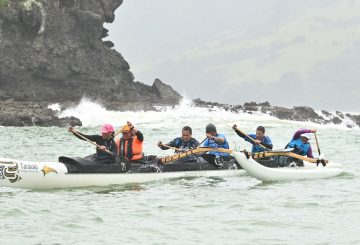Diane Alder, một y tá 58 tuổi, đã bị sốc khi phát hiện ra mình bị loãng xương sau khi bị gãy cổ tay và cẳng tay do ngã vào ngày đầu năm mới. Mặc dù có lối sống năng động, Alder chưa bao giờ bị gãy xương trước đây và ban đầu nghĩ rằng vết thương của cô là kết quả của một tai nạn đáng tiếc.
Trong quá trình hồi phục, Alder đã được Dịch vụ Liên lạc Gãy xương (FLS) liên lạc để lên lịch quét mật độ xương. Dịch vụ này, được tài trợ bởi ACC, là một trợ giúp tuyệt vời cho Alder, cung cấp cho cô ấy thông tin có giá trị về bệnh loãng xương và cách quản lý tình trạng của cô ấy.
Tai nạn của Alder xảy ra khi cô trượt trên mặt nước tràn ra từ bát chó của cô, khiến cô ngã và gãy cổ tay. Bất chấp sự đau đớn và bất tiện của chấn thương, Alder trở lại làm y tá ba tuần sau đó, mặc dù làm nhiệm vụ nhẹ nhàng.
Dịch vụ Liên lạc Gãy xương, được thành lập vào tháng 6 năm 2022, đã được công nhận là tài sản cộng đồng có giá trị, được công nhận xếp hạng Sao Bạc từ chương trình Chụp đứt gãy xương của Quỹ Loãng xương Quốc tế. Dịch vụ này nhằm mục đích ngăn ngừa gãy xương lặp lại, xác định loãng xương và giảm té ngã và gãy xương trong khu vực.
Kể từ khi thành lập, dịch vụ này đã xác định được 785 người trên 50 tuổi bị gãy xương dễ vỡ ở vùng Taranaki. Trong số này, 530 người đã nhận được khuyến nghị điều trị và hơn 57% đã bắt đầu điều trị đặc hiệu loãng xương trong vòng 16 tuần sau khi xác định.
Loãng xương là một tình trạng mãn tính làm suy yếu xương, làm cho chúng giòn và làm tăng nguy cơ gãy xương. Vào năm 2023, ACC đã chấp nhận hơn 173.000 yêu cầu bồi thường mới về chấn thương liên quan đến ngã từ người lớn trên 65 tuổi, chi phí 345 triệu đô la cho hỗ trợ phục hồi. Nếu không có biện pháp phòng ngừa, chi phí của những chấn thương này dự kiến sẽ đạt 720 triệu đô la vào năm 2035, theo nhà lãnh đạo phòng ngừa thương tích ACC James Whitaker.






























































